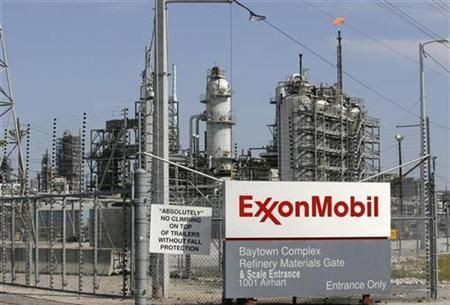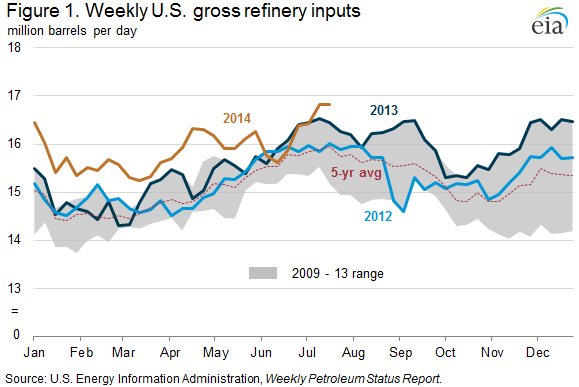US Oil Refineries Running At Record Levels Amid Domestic Supply Boom, But Pump Prices Will Still Hurt

U.S. refiners are processing oil at record levels this summer, thanks to the boom in North American energy production, expanding refinery capacity and falling operating costs. But all that extra gasoline doesn't mean less pain at the pump.
Refinery inputs totaled 16.8 million barrels of crude oil per day in each of the past two weeks, smashing the previous record from the summer of 2005, the U.S. Energy Information Administration (EIA), a federal statistics agency, said in its latest weekly petroleum report. Refineries produce motor fuels like gasoline and diesel as well as jet fuel, propane and petrochemical feedstocks, among other products.
“We’re pumping a lot of juice — these refineries are running hard,” Donald Morton, senior vice president at financial advisory firm Herbert J. Sims & Co., told the Wall Street Journal earlier this week.

Still, even as refineries churn out more gasoline and diesel products, don’t expect to pay any less at the pump this summer, Andy Lipow, a Houston-based oil industry consultant and president of Lipow Oil Associates LLC, said.
“Although refiners are running more, the fact is that world oil demand continues to grow," he told International Business Times. "The U.S. gasoline and diesel markets are linked to world oil prices.”
Refineries first hit record levels last week, when inputs totaled 16.6 million barrels a day, the most in weekly EIA data going back to 1989. Facilities in the U.S. Gulf Coast and Midwest regions in particular are contributing to this unprecedented rise, according to the EIA.
One key reason is the major uptick in Canadian and domestic crude oil production spurred by hydraulic fracturing and horizontal drilling technologies, Lipow said.
The boom has not only increased supplies, it has lowered costs for refiners, since raw domestic crude comes cheaper than supplies shipped in from overseas. On top of that, long-anticipated expansions in Gulf Coast states mean refiners can take in more crude, while cheap electricity from natural gas plants is lowering refiners’ operating costs nationwide, Lipow said. “It’s enabling U.S. refiners to be more competitive with refiners in other parts of the world,” including those in South America, Europe and Africa, he said.
That trend is likely to continue into the future as North American drillers produce more crude oil and refineries continue to expand their capacity. "If one looks at the long-term trend, the answer is we are going to be processing record amounts of crude oil over the next few years, more than we've previously done."
© Copyright IBTimes 2025. All rights reserved.



















